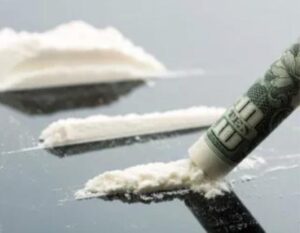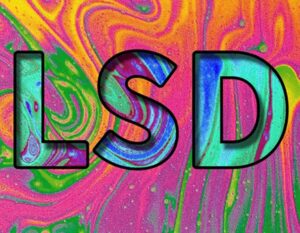What is Drug Addiction
Drug addiction, often referred to as substance use disorder (SUD), is a complex condition characterised by an individual’s inability to control their use of a substance, despite the negative consequences it brings to their life. This condition can involve a variety of substances, including illegal drugs, prescription medications, alcohol, and even behavioural addictions related to activities like gambling.
The shift from terms like “addiction” to “substance use disorder” is significant for several reasons:
- Stigmatisation: Using SUD helps reduce the stigma associated with addiction, framing it as a medical issue rather than a moral one.
- Treatment Focus: It encourages a focus on treatment and recovery rather than punishment, emphasising the need for medical and psychological support.
- Holistic Approach: The terminology acknowledges the biological, psychological, and social factors that contribute to addiction, promoting more comprehensive treatment options.
This new understanding aims to foster empathy and support for individuals struggling with substance use, guiding them toward effective treatment and recovery.
Understanding Substance Use Disorder (SUD)
The term “substance use disorder” reflects a more comprehensive understanding of addiction. It emphasizes that addiction is not merely a moral failing or a lack of willpower but a medical condition that affects the brain. SUD is defined by a range of criteria, which can include:
Inability to Cut Down: Continued use of the substance despite attempts to reduce consumption.
Cravings: Intense urges to use the substance.
Neglecting Responsibilities: Failing to fulfill obligations at work, school, or home due to substance use.
Tolerance: Needing more of the substance to achieve the same effect.
Withdrawal Symptoms: Experiencing physical or psychological symptoms when not using the substance.
Understanding Drugs
Drug use can have profound impacts on individuals and society. We believe that knowledge is the first step towards healing. It’s essential to understand the different types of drugs, how they affect the body and mind, and the potential for addiction.
Each drug has its own unique effects and risks. Some may provide temporary relief or pleasure, while others can lead to serious health issues and dependency. On this page, you’ll find information on commonly abused drugs, along with images to help you recognize them. By educating ourselves about these substances, we can better understand the challenges they pose and take important steps towards recovery.
Overview of Common Drugs and Their Effects:
HEROIN
Heroin is an illegal opioid derived from morphine that produces intense feelings of euphoria, pain relief, and relaxation. It is highly addictive, often leading to rapid tolerance and physical dependence, which means users may experience severe withdrawal symptoms when they try to stop. The consequences of heroin use can be devastating, resulting in serious health risks, legal issues, and significant impacts on relationships and financial stability.

COCAINE
Cocaine is a powerful stimulant drug derived from the coca plant, known for its intense and short-lived euphoric effects. Users often experience increased energy, alertness, and a heightened sense of confidence. However, cocaine is highly addictive, and repeated use can quickly lead to tolerance, requiring larger doses to achieve the same high. The drug poses serious health risks, including heart problems, respiratory issues, and neurological effects, with a significant risk of overdose leading to severe physical and psychological consequences.
CRACK COCAINE
Crack cocaine, commonly referred to simply as crack, is a potent form of cocaine that has been processed into small, hard rocks that can be smoked. This method allows the drug to reach the brain quickly, resulting in an intense and immediate euphoric high that lasts for a shorter duration than powdered cocaine. Crack is highly addictive, leading to rapid tolerance and compulsive use. Users may experience increased energy and euphoria, but these effects are often followed by anxiety, paranoia, and depression. The associated health risks are severe, including respiratory issues, cardiovascular problems, and the potential for overdose.
CANNABIS
Cannabis, commonly known as marijuana, weed, or pot, is a plant rich in compounds called cannabinoids, with tetrahydrocannabinol (THC) and cannabidiol (CBD) being the most prominent. THC is the primary psychoactive ingredient that produces the “high” associated with cannabis use. Prolonged use can lead to cannabis use disorder, resulting in psychological dependence and addiction. Additionally, long-term consumption carries significant risks, including the potential for cognitive impairment and the development of psychosis, making it essential for users to be aware of these possible consequences.

METAPHINE
Methamphetamine, also known as meth, crystal meth, or ice, is a powerful and highly addictive central nervous system stimulant. It appears as a white, odourless, bitter-tasting crystalline powder that can be ingested, snorted, smoked, or injected. Methamphetamine produces intense feelings of euphoria, increased energy, and heightened focus, but these effects come at a significant cost. The drug can lead to severe addiction, causing devastating health consequences such as dental problems (often called “meth mouth”), weight loss, and serious psychological issues, including anxiety, paranoia, and hallucinations. Long-term use can result in lasting brain and body damage, complicating recovery.
 Amphetamines
Amphetamines
Amphetamines, also known as speed, uppers, or bennies, are a class of stimulant drugs that affect the central nervous system. Often prescribed to treat attention deficit hyperactivity disorder (ADHD) and narcolepsy, amphetamines are sometimes misused for their energizing effects. They increase levels of certain neurotransmitters in the brain, leading to enhanced focus and a sense of euphoria. However, misuse can result in serious side effects, including anxiety, paranoia, and cardiovascular problems. The potential for addiction is significant, as users may develop tolerance and experience withdrawal symptoms when not using the drug.
 Benzodiazepines
Benzodiazepines
Benzodiazepines, also known as “benzos,” are a class of medications commonly prescribed for anxiety, insomnia, panic disorders, and certain seizure disorders. Well-known examples include Valium (diazepam), Xanax (alprazolam), Ativan (lorazepam), and Klonopin (clonazepam). These drugs enhance the effects of a neurotransmitter called gamma-aminobutyric acid (GABA) in the brain, leading to sedation and a calming effect. While effective for short-term use, benzodiazepines carry a risk of dependence and addiction, especially with prolonged use or higher doses. Withdrawal can produce severe symptoms, including anxiety, insomnia, and seizures.
 Hallucinogens
Hallucinogens
Hallucinogens, also known as psychedelics, are a class of drugs that alter perception, mood, and cognitive processes, leading to experiences that may include visual and auditory hallucinations. Common examples include LSD (lysergic acid diethylamide), psilocybin (found in magic mushrooms), and mescaline (derived from peyote). These substances typically affect serotonin receptors in the brain, resulting in changes in thought patterns and sensory perceptions. While some use hallucinogens for recreational or spiritual purposes, they can lead to unpredictable psychological effects, including anxiety, paranoia, and “bad trips.” Although physical dependence is rare, they may exacerbate underlying mental health issues.
 Ketamine
Ketamine
Ketamine is a dissociative aesthetic that has been used in medical settings for anaesthesia and pain management. It is known for its ability to induce a trance-like state, providing pain relief, sedation, and amnesia. In recent years, ketamine has gained attention for its potential therapeutic effects in treating severe depression and other mental health disorders, particularly in individuals who have not responded to traditional treatments. However, it can also be misused recreationally for its hallucinogenic and dissociative effects, leading to feelings of detachment from reality. While some users report positive experiences, others may experience negative psychological effects such as confusion, agitation, or hallucinations. Repeated use can lead to tolerance and dependence, as well as urinary tract and bladder issues.
 MDMA
MDMA
MDMA, commonly known as ecstasy or molly, is a synthetic psychoactive substance known for its stimulant and empathogenic effects. It enhances mood, increases energy, and promotes feelings of emotional closeness and empathy, making it popular in social and party settings. Users often report heightened sensory perception and an increased sense of well-being. However, MDMA is also associated with several risks, including dehydration, hyperthermia, and potential long-term effects on mood and cognition. The drug can lead to a crash after use, characterized by fatigue, sadness, and irritability. MDMA can also be addictive for some individuals, leading to repeated use and the potential for negative health consequences. Additionally, the purity and dosage of MDMA can vary widely in recreational settings, increasing the risk of overdose and adverse reactions.
We can also treat clients with addiction to any substances including Legal Highs and prescription medication that can be addictive and pose significant risks to physical and mental health. If you or someone you know is struggling with substance use, reaching out for help is an important step. Our team is here to provide support and guidance. By contacting us, we can work together to devise a personalized treatment plan tailored to your needs, helping you navigate the path to recovery and regain control of your life.
The H.A.D.I approach to Drug Addiction Treatment


DRUG ADDICTION TREATMENT AND PSYCHIATRIC CENTRE
RECOVERY ISN’T ABOUT BEING PERFECT, ITS ABOUT BEING WHOLE
Hadi Rehab offers personalised and comprehensive treatment programs for individuals struggling with misuse of prescription and illegal drugs.




